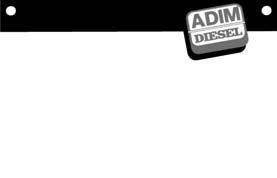
1 minute read
LIFTING INSTRUCTIONS
Components weighing over 25 kg or of significant size must be supported and removed using suitable lifting equipment with wire rope or polyester slings. In the paragraphs regarding removal and refitting operations, the weight of the component or assembly to be lifted is
indicated with the symbol
Advertisement
WIRE ROPES - SLINGS
• Use wire ropes or polyester slings of suitable capacity for the parts to be lifted, referring to the following tables:
NOTE. Lifting capacities are calculated with a safety coefficient.
• The lifting hook should be attached to the central part of the rope or sling; if the hook is attached near the ends of the rope/sling, this could cause the load to slip during lifting. • Never lift a heavy load using a single rope; always use two or more symmetrically arranged ropes.
Suspension of a load from a single rope could cause the load to start rotating and consequently cause the rope strands to untwist or the load to slip; this could lead to serious injury. • Never lift a heavy load when the two branches of the ropes form a wide angle.
The permitted load (kg) decreases in inverse proportion to the angle of suspension; the table below indicates how the permitted load varies according to the angle of suspension for two Ø 10 mm ropes each with a load capacity of 1000 kg.
WIRE ROPES (standard twisted «S» or «Z» type)
POLYESTER SLINGS (eye-and-eye - simple loop)
Ø rope mm Capacity (kg)
60° 90° Width (mm) Capacity (kg)
60° 90°
8 10 12 14 16 18 650 1000 1450 2000 2600 3300 620 1740 2500 3460 4500 5710 500 1420 2050 2820 3670 4660 25 50 62 75 100 150 500 1000 1250 1400 2000 2500 400 800 1000 1120 1600 2000 860 1730 2160 2420 3460 4330 700 1410 1760 1980 2820 3530
2000 1900
Load capacity: kg 2000
1000
1700
1400
1000
500
30° 60° 90° 120° 150°
Angle of suspension:



